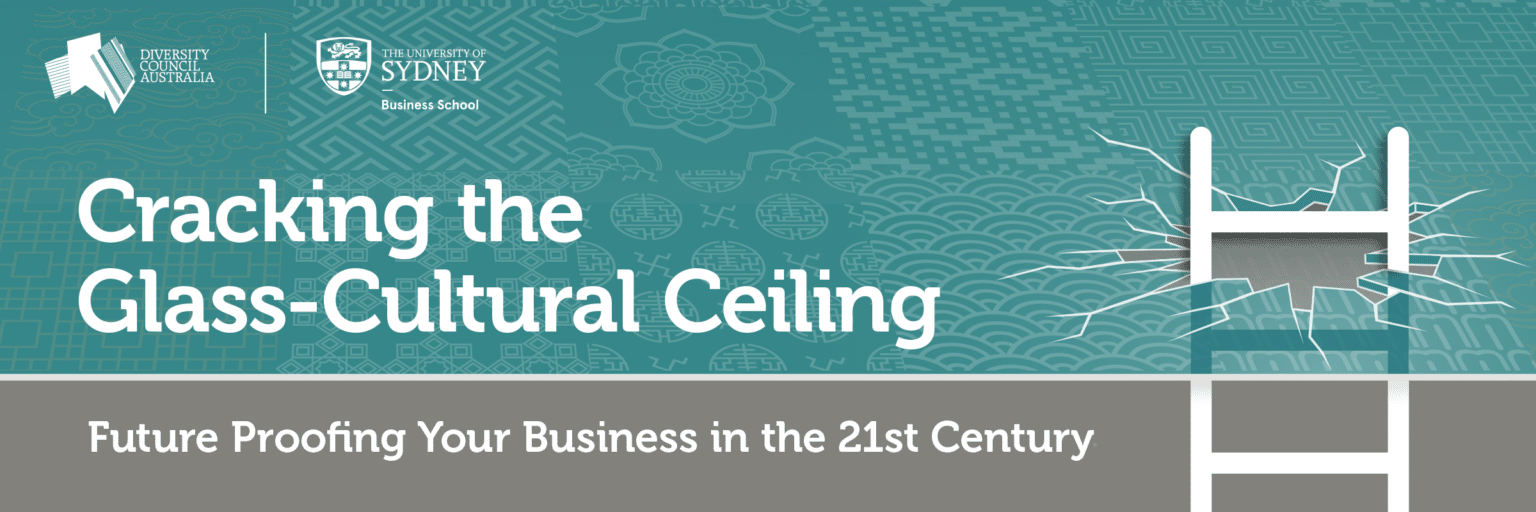
Although organisations are increasingly investing in building culturally diverse and gender balanced leadership profiles, culturally diverse women are notably under-represented in leadership ranks.
In Australia and overseas, culturally diverse women experience a ‘double jeopardy’ when accessing leadership roles due to their gender and cultural background. This double jeopardy results in a ˜glass-cultural ceiling in which invisible organisational barriers lock out culturally diverse women from accessing leadership positions in their workplaces.
Diversity Council Australia has partnered with the University of Sydney Business School, Google, Aurecon, Commonwealth Bank and Deloitte to release a new report, Cracking the Glass-Cultural Ceiling: Future Proofing Your Business in the 21st Century.
The research comprises:
- an extensive review of international and national research
- an on-line survey of 366 female leaders and aspiring leaders from a diversity of backgrounds;
- four Think Tanks with 54 culturally diverse female leaders and emerging leaders; and
- 15 individual interviews with culturally diverse women who were in high-profile, very senior roles.
The report provides a compelling case for cracking the glass-cultural ceiling.
Culturally diverse women – Ambitious, capable and resilient
Culturally diverse female talent working in Australia are ambitious, capable, and resilient, and well positioned to contribute to their own and their organisations success in the 21st century.
- Ambitious: 88% of culturally diverse female talent we surveyed planned to advance to a very senior role and 91% said that working in a job that offered mobility to leadership was extremely or very important.
- Capable: Two thirds (66%) of culturally diverse female talent spoke a language other than English when at home, and over a third (37%) had a bi/multicultural identity, in which they identify with more than one cultural background and so are able to communicate or ‘broker across cultural contexts’.
- Resilient: Culturally diverse women reported that their personal resilience had been key to them retaining their leadership aspirations in the face of the career locks they had experienced. Where there are no or limited culturally diverse women in the leadership ranks, it takes immense resilience to swim against the very strong tide and still maintain who you are.
Locked out of leadership
Australian organisations could better value and leverage the ambition and capabilities of culturally diverse women. Participants in this research reported feeling invisible and undervalued when it comes to leadership opportunities, while others felt they were regarded as ‘high risk’ leadership contenders.
- Under-Leveraged: Only 15% of participants strongly agreed that their organisation took advantage of workforce diversity to better service clients or access new markets.
- Under-Valued: While 88% of culturally diverse women planned to advance to a very senior role, only 10% strongly agreed that their leadership traits were recognised or that their opinions were valued and respected.
- Moving On: One in four culturally diverse women (26%) agreed that cultural barriers in the workplace had caused them to scale back at work (i.e. reduce their ambitions, work fewer hours, not work as hard, and/or consider quitting) and 28% stated it was likely they would seek a job with another employer within the next year.
Six keys to unlocking talents and contributions of culturally diverse women
The career insights shared by culturally diverse female leaders and emerging leaders enabled us to craft an organisational framework for action. This framework explains what is happening to lock culturally diverse women out of leadership and what Australian organisations can do to unlock that talent. This framework for action is summarised below. It is organised around six organisational talent locks and related keys, which consider:
- What are the organisational locks that prevent culturally diverse women in Australia from accessing leadership roles?
- What are the organisational keys (actions) to unlock the talents and contributions of culturally diverse women?
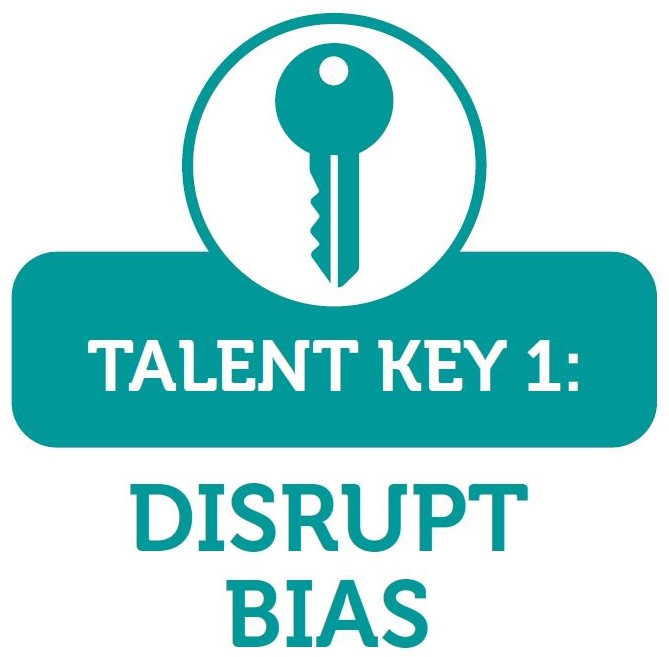
Talent Key 1: Disrupt bias
Talent Key 1: Disrupt bias
This key opens the lock of amplified bias, where gender and cultural biases have a compounding or ‘amplifying’ effect on culturally diverse women and their lack of career progress and opportunities.
Organisations need to educate on acknowledging differences without stereotyping – that is, learning about different cultures to help understand what culturally diverse women may have in common, remembering there are always individual differences.
- Educate about effective (bias-free) decision-making – explain about common (cultural and gender) biases, bias hot spots for decision-making, and actions to minimise bias.
- Apply a gendered-culture lens to all people, processes and systems across the career lifecycle (attraction, recruitment, promotion) to ensure these are free of bias.
- Use inclusion nudges – design people processes to ‘nudge’ employees towards more inclusive practices and outsmart unconscious biases that can occur in critical decision-making situations (e.g. removing gender and cultural background identifiers on job applications).
- Introduce a ‘courage to call it’ campaign to encourage staff to call out and address workplace banter that excludes or discredits culturally.
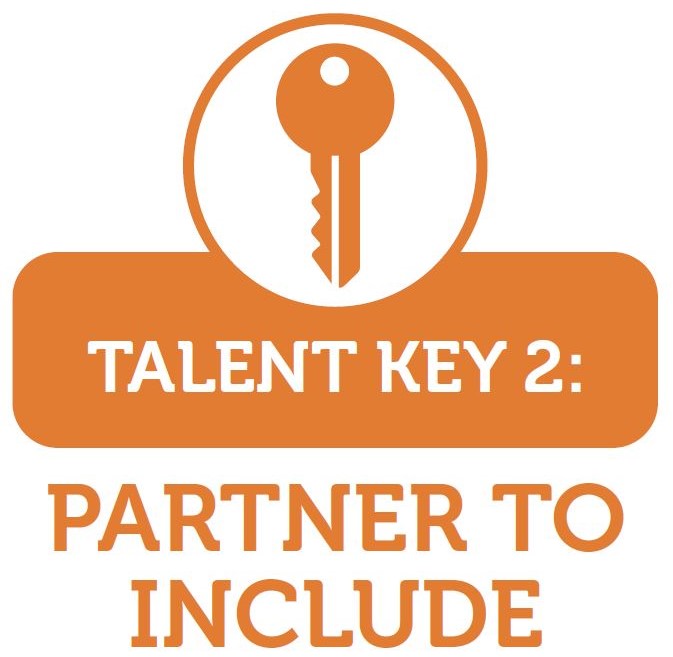
Talent Key : Partner to Include
This key opens the lock of divisions created when driving organisational change and there is a perception that minority or disadvantaged cohorts, such as culturally diverse women, are given ‘special treatment’.
Businesses need to dissolve divisions by ensuring D&I initiatives involve active and equal partnerships between women and men, and people from culturally diverse and non-culturally diverse backgrounds – active and equal in advocating, being role models, and being change agents.
- Use the business case in this report to build understanding and engagement around the importance of attracting, engaging, and promoting culturally diverse female talent.
- Address potential backlash about D&I initiatives by explaining privilege and how changes are needed to remove bias and create a level playing field.
- Encourage people involved in D&I initiatives to engage with intersectionality. Instead of focusing on either gender equality OR cultural diversity, try to consider both – look for commonalities among women while also acknowledging important points of difference between women from different cultural backgrounds.
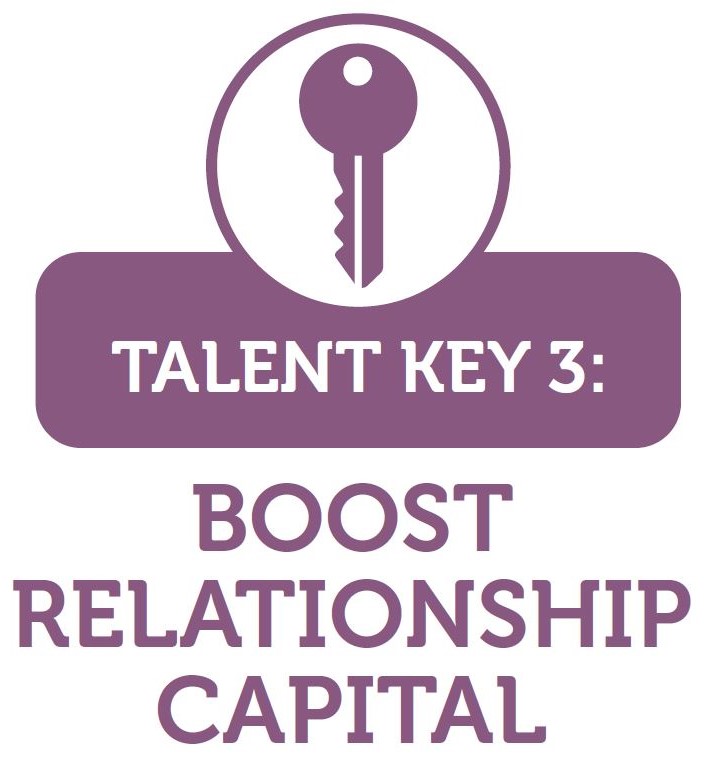
Talent Key 3: Boost relationship capital
This key opens the lock that fails to recognise the benefits of social capital and limits access to professional networks.
Emphasis needs to be given to building relationship capital from early career stages.
- Create mentoring/sponsorship initiatives with clear objectives and accountabilities, and link these into the performance review process of mentors and mentees.
- Diversify mentors and sponsors to include a variety of demographic backgrounds (e.g. cultural backgrounds, genders), leadership styles (e.g. extroverted, introverted), and ways of working (e.g. part-time, full-time, from home, at work).
- Use out of department/organisation mentoring to avoid perceptions of threat or competition.
- Provide training to mentors – do not assume all leaders automatically have the skills or ability coach and mentor others.
- Encourage participation in supportive networking groups such as Diverse Australasian Women’s Network (DAWN), Chief Executive Women (CEW), and Women on Boards (WoB).
- Diversify socialising events and activities to go beyond alcohol-based evening/weekend events or physically demanding sporting activities.
- Profile a diversity of leaders in your organisation, including culturally diverse female talent.
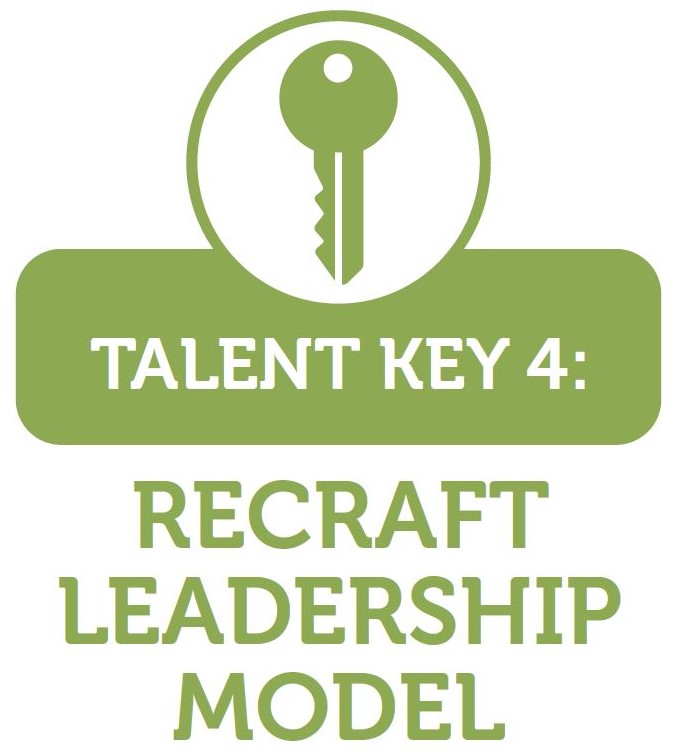
Talent Key 4: Recraft leadership model
This key opens the lock of inherent bias towards masculine Western leadership styles where extraoversion, self promotion and assertive direct communication are over-valued.
It is essential that organisations promote a broader view of ˜the effective leader “ one that values a variety of demographic backgrounds (e.g. cultural backgrounds, genders) and leadership styles (e.g. introverted and extroverted), as well as leaders who work flexibly (e.g. part-time, early start-finish, work from home) and conventionally (e.g. full-time in the office).
- Apply a gendered-cultural lens to your leadership model and succession planning criteria and assessment – do these contain statements like ‘executive presence’ or ‘gravitas’ that unintentionally filter out culturally diverse female talent?
- Value cultural experience, cultural capabilities and language skills when hiring and promoting.
- Implement various ways to assess merit “ avoid over-relying on behavioural-based interviewing as this tends to recognise an individual’s ability to interview well rather than their actual performance.
- Partner with specialist recruiters or general recruiters who include culturally diverse female talent in their candidate offerings.
- Develop the inclusive leadership capabilities of your current and future leaders
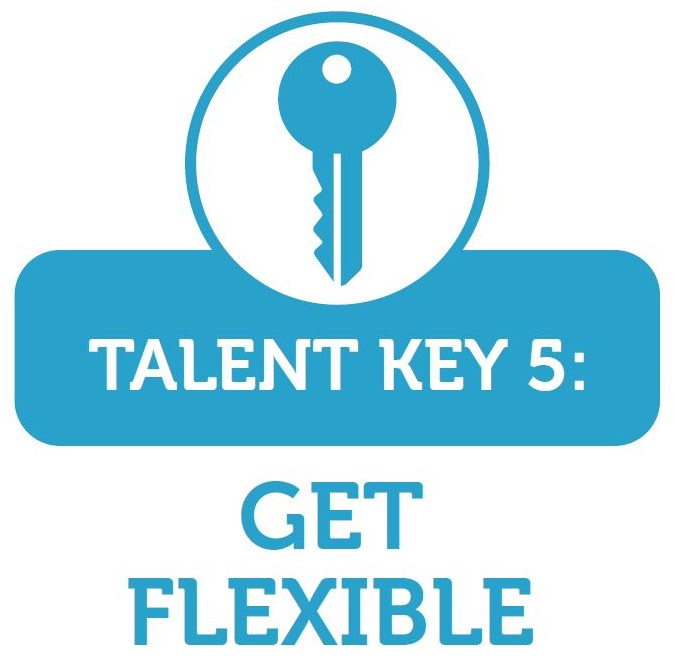
Talent Key 5: Get Flexible
This key opens the lock that prevents access to flexible working, fails to properly engage with flexible workers or views flexible workers as less hard-working.
DCAs Future-Flex: Mainstreaming Flexibility by Team Design Guidelines challenges assumptions about flexibility and encourages staff to become aware of their biases about work and flexibility, and how these stop flexibility from becoming standard business practice. A number of recommendations are made in regards to implementing flexible working across entire teams.
- Provide leaders with the tools they need to proactively implement flexibility (e.g. flexibility policies, principles, checklists, workshops).
- Specify leadership behaviours which will be rewarded (e.g. access flexible work themselves and publicly talk about this)
- Link flexible work and flexible careers to remuneration and reward systems.
- Educate leaders about managing for performance “ not time and attendance.
- Craft messages that will engage and inspire a diversity of leaders, including men
- Share – conversion stories of leaders who have changed their mindset from resisting flexibility to embracing it.
- Provide flexible career pathways which take into account the different life-stages of staff
- Implement a shared care policy
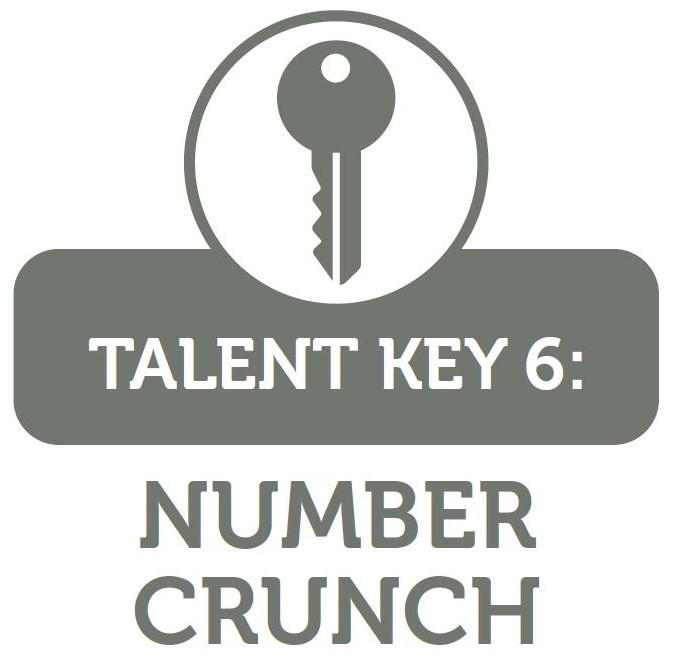
Talent Key 6: Number Crunch
This key opens the lock where there is a lack of accountability for delivering on diversity and inclusion
Collecting and reporting on diversity and inclusion leadership metrics is essential.
- Consider introducing targets to create a culture of accountability.
- Invest in workforce analytics to measure cultural diversity in your workforce and markets, as well as workforce cultural capability.
- Provide leaders with the incentive to take the ˜risk to promote culturally diverse women by considering weighting as part of the selection process.
- Publicly report on progress in meeting targets.
NOTE: ‘Culturally diverse women refers to any women who identified in the survey as being only from a non-Main English Speaking Country cultural background (according to the ABS these are countries other than Canada, Ireland, New Zealand, South Africa, United Kingdom, and United States of America).
Want to Use Our Research?
Materials contained in this document are © Copyright of DCA Ltd, 2017 and come under our Terms of Use and Privacy Statement. If you wish to use any content contained in this report, please contact DCA at research@dca.org.au, to seek consent.
Where you wish to refer to our research publicly, it must be correctly attributed to DCA.
- Formal attribution to DCA is required where references to DCA research material are in a written format.
- Citing DCA as a source will suffice where the reference is made in a verbal format.
The suggested citation for this report is:
Diversity Council Australia (OLeary, J., Groutsis, D. and DAlmada-Remedios, R.) Cracking the Glass-Cultural Ceiling: Future Proofing Your Business in the 21st Century, Sydney, Diversity Council Australia, 2017.
The rest of this content is restricted to DCA members.
To find out more about joining DCA please see below.
If your organisation has already signed up for membership, this will activate as soon as payment is received.
